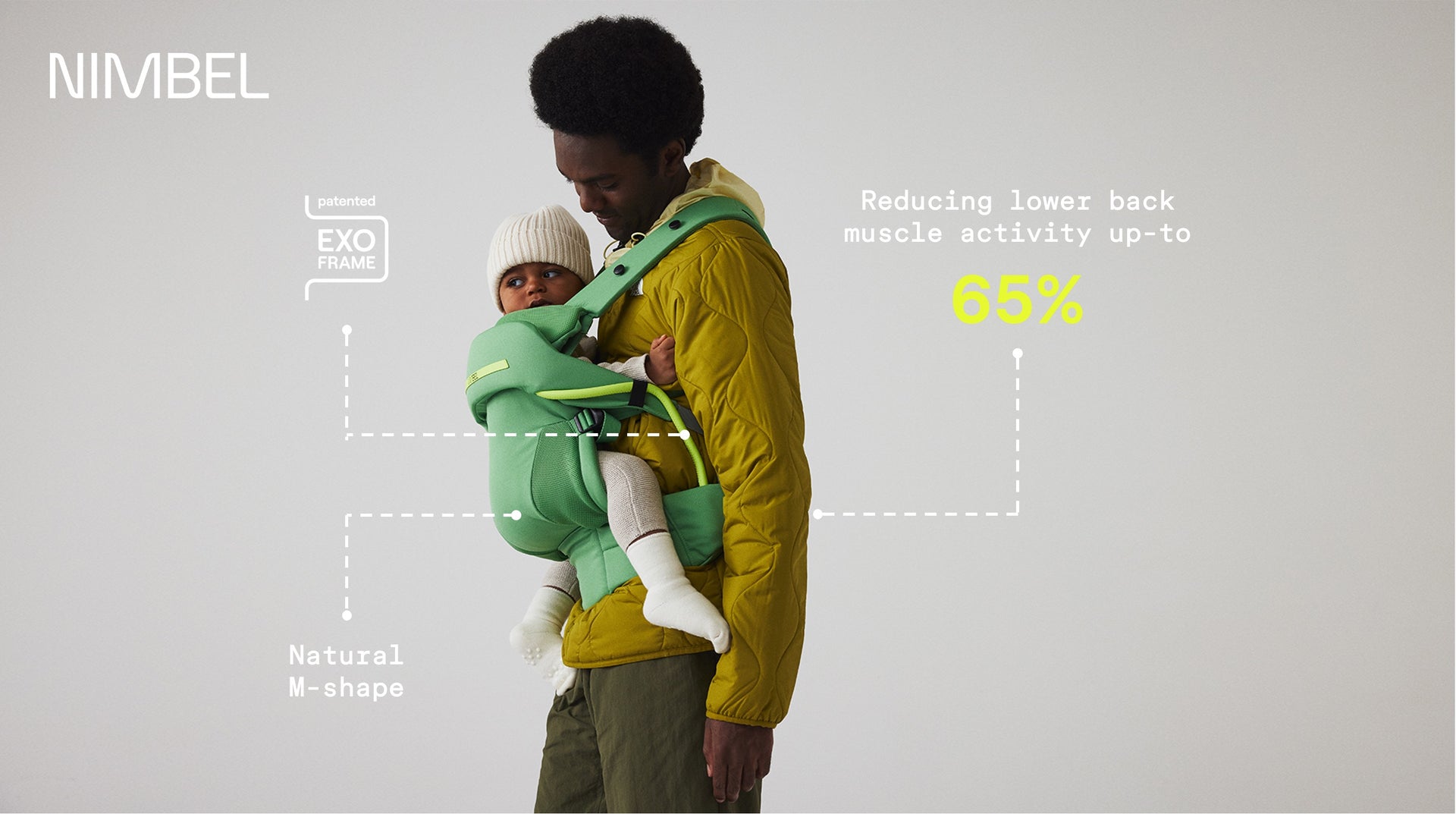The NIMBEL baby carrier has been recognized for its ability to reduce shoulder strain, but recent research from the Spine & Joint Center has shed light on its impact on back muscles. In a study involving eleven participants, researchers attached EMG stickers to the backs of the subjects to monitor muscle activity. The participants were instructed to stand without a baby carrier, with a baby carrier without weight, and with a 7-kilogram doll simulating the weight of a 5-month-old baby. Each subject was equipped with the NIMBEL baby carrier and two other commonly used carriers in the Netherlands, with the conditions being randomly assigned.
65% less muscle activity
The results highlighted that the NIMBEL baby carrier significantly minimized back strain, leading to up to 65% less muscle activity when carrying the doll compared to other carriers. Remarkably, the NIMBEL baby carrier placed a minimal additional load on the back when carrying the doll, unlike the other carriers.
Jan-Paul van Wingerden, the director of the Spine & Joint Center, explained the disparity in back activity among the carriers, stating, "Standard baby carriers exert weight on the shoulders, causing the upper body to lean forward. Consequently, the back muscles must compensate to maintain an upright posture. The design of the NIMBEL baby carrier ensures that the child's weight is directly distributed to the parent's hips, alleviating the strain on the shoulders and reducing the need for excessive back muscle engagement."
The study also emphasized the interplay between the shoulders and back. Researchers observed that adjusting the shoulder straps of the NIMBEL baby carrier, either by the testers themselves or the subjects, directly affected the lower back muscle activity. Notably, looser shoulder straps were associated with lower back muscle activity, a unique feature facilitated by the NIMBEL carrier.
Tight shoulder straps
Additionally, it was observed that most testers instinctively tightened the shoulder straps more than necessary, likely influenced by their prior experiences with other carriers. Stefan van Cleef, the chief designer at NIMBEL, noted, "Although the NIMBEL baby carrier is engineered to function without the necessity of shoulder straps, we recommend their use for added safety and ensuring the baby's comfortable positioning. Users may find it unusual at first to wear the NIMBEL with loosely hanging shoulder straps, but the comfort it provides is well worth the adjustment."
Potential benefits for pelvic and back issues
While the initial study established the NIMBEL baby carrier's benefits for shoulder and back relief, the Spine & Joint Center plans to conduct further research with a larger participant pool and examine its practical use in daily life. As physiotherapists, they anticipate that the NIMBEL baby carrier could provide vital support for young parents dealing with pelvic and back issues.